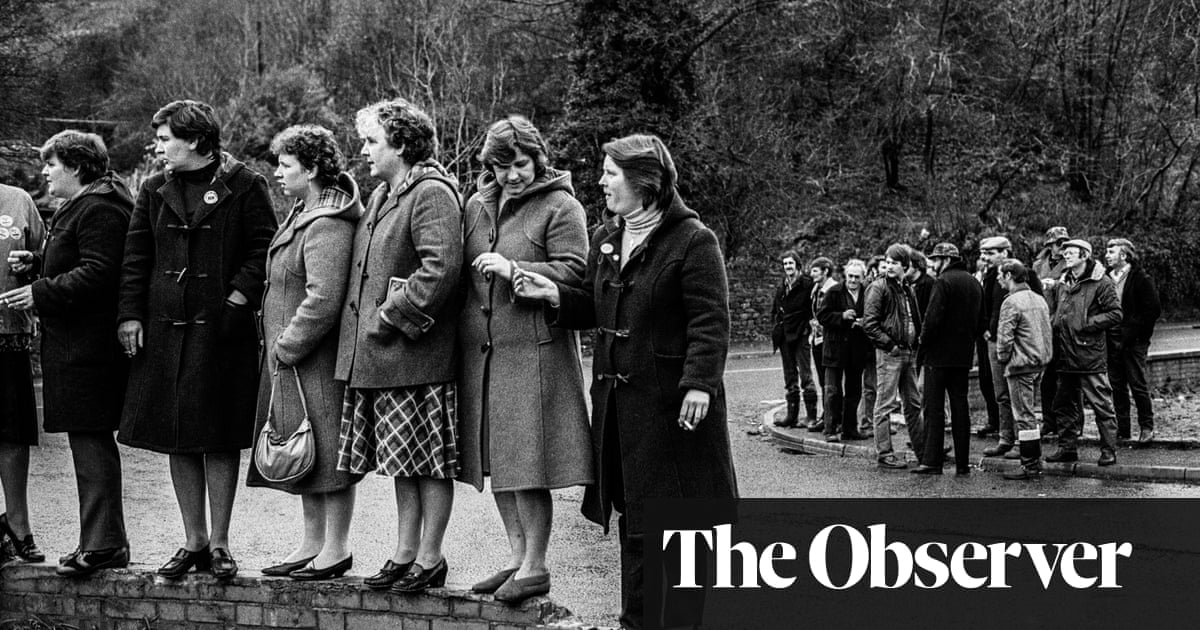
The semi-naked performers writhe about the floor, getting lewd and intimate with the dead mackerel, hotdogs, plucked chickens and other offerings being strewn among them by someone wearing an apron. There seems to be a lot of wet paint and plastic tarp lubricating all the flailing about in Meat Joy, which the artist, Carolee Schneemann, described as “an erotic rite”. The footage is grainy, the air of worthy transgression a picture of its time. It was 1964. Do not point that mackerel at me.
Meat Joy was first performed at a festival in Paris, where a male spectator apparently attempted to strangle the artist. Schneemann – and her accomplices from New York’s Judson Dance Theater – performed again a few days later in London, and were chased off the stage by the police, before being exfiltrated in a fleet of cars. Some time later, London’s Whitechapel Gallery restaged the event, but without the police.
Born in 1939, Schneemann made art that was inspirational, confrontational and excessive, sometimes hilarious and sometimes abject. She covered herself in molasses and wallpaper paste and rolled around in shredded paper, to emerge like a human collage, somehow both brush and painting, artist and model, performer and object. Schneemann’s art was often seen as too much: too frank, too dirty, too naked, too bold, too intellectual, too hokey, too sweaty, too full of ideas, too embodied, too self-exposing, too autobiographical, too argumentative and, most of all, altogether too much a celebration of what it is to be a woman. The female was in any case already too much. Her art was great and terrible and embarrassing, shocking and tender.
It wasn’t just male critics who balked and complained. The artist’s best known work, the one that has been anthologised in almost all surveys of feminist art history, is Schneemann’s 1976 Interior Scroll, which began life as a live performance in which the naked artist removed a scroll from her vagina and read from it to a mostly female audience. The text purports to be a kind of rejoinder to criticisms of her made by a male film-maker, but is in fact a response to critic and art historian Annette Michelson, who had said she couldn’t watch Schneemann’s films. Looking at the photographs, collages, texts and scroll now is like beholding some kind of relic of an almost mythological, miraculous moment. As Eileen Myles writes in the Barbican’s catalogue: “The cunt speaks!” And it would continue to speak.
Schneemann was outspoken and beautiful too, which perhaps made matters worse. In one series of photographs from 1963, an enormously productive year for her, she posed for Eye Body, 36 Transformative Actions for Camera. The 18 photographs that survive have her lying down with garter snakes on her naked torso, wearing mud as makeup and smeared in paint, and interacting with some of her assemblages. In them all, she looks so like Elizabeth Taylor’s Cleopatra I did a double-take.
She is a continuing influence and inspiration, as well as a controversial figure – not only to succeeding generations of feminist artists and thinkers and writers, from Maggie Nelson to Eileen Myles, but also to artists such as Matthew Barney. She inspired The Vagina Monologues and, in some ways, exceeded her time and her pivotal role in feminist art. Schneemann kept account of the degrees to which her works inspired others, less out of vanity than a desire to track the understanding and interpretations her works attracted. She was more analytical than her art looks.
The Barbican’s retrospective is a furious ride, and runs the gamut of the artist’s life and work, from painting to performance, film, photography, collage, bricolage and copious archival material. Schneemann was her own best archivist, constantly compiling notes, drawings, phone numbers (she knew everybody), lists, stray thoughts and ideas. Throughout her life, she regarded herself as a painter, which is where she began as a student, a dutiful if belated follower of both abstract expressionism and of Cézanne. Her landscapes are war zones of paint, and there is something of the compressions and distortions of Austrian painter Maria Lassnig in her figures.
She painted her naked lover and collaborator, the composer James Tenney, and their cat, and went on to physically deconstruct her painting to create hybrid works incorporating freestanding stretchers and torn and scissored canvases until they resembled the wreckage of battles won or lost, one topped with a flag on a pole as well as a litter of spent beer cans, broken glass, rope, paint brushes, spews of magnetic tape and other detritus. She went on to make burnt boxes with scorch marks and shattered shards of mirror and little winking lights that had the feel of the body’s interior and of the mind’s intricacies. Some were dedicated to choreographer, dancer and fellow member of the Judson Church Theater Yvonne Rainer. Schneemann’s box constructions bore the influence of the reclusive and strange Joseph Cornell, whom she befriended.
All this was a kind of preamble to Schneemann’s own performances, recorded in photographs and film. These records are, however, no substitute for the real thing, which one dance critic described as “brainless messy happenings”. But on the evidence we have, they were much more than that. They encompassed joy and confrontation, and the artist’s evident glee as well as seriousness. Her films, too, attempt to get at the texture of life. In Fuses – a 1960s film that took three years to shoot (in 30-second bursts) – Schneemann records her sex life; in moments of intimacy, of bodies and light, real shadow and the grain of the film all montaged with footage that has been spliced, baked in the oven, dipped in acid and exposed to the weather. In the parlance of the time, Fuses was totally out there.
Such self-exposure continues in Blood Work Diary from 1972, the artist’s response to a lover’s aversion to seeing her menstrual blood. She fixed the clumps and drops of blood on tissues using egg yolk, as if it were tempera paint, and dated the waxing and waning of her period, the papers framed in a grid, like pinned butterflies. Drawings become a ribald congress of body parts, and a whole series depicts talking vulva, quoting French psychoanalyst Jacques Lacan and American sexologists Masters and Johnson.
All this gives way, in later works, to images and footage of violence and death. Several works incorporate news and documentary footage of unspeakable acts of brutality and testimonies from wars and insurrections, from the Balkans to the Middle East, from Vietnam to the Caribbean, alternating and juxtaposed with people eating, and one of her cats after having been being hit by a car. There are memorials to dead friends, and a record of her own long battles with lymphoma and breast cancer. Oranges dangle like sputniks, pierced by hypodermic needles.
The work I find most shocking here, because it feels so unnecessary, is Terminal Velocity (2001-5), in which computer scans from news reportage, of bodies falling from the twin towers on 9/11, are reproduced on an enlarged but often blurry scale. Some fall head first, others horizontally with arms outstetched, during their 10-second drop to the ground. Schneemann wanted to counter the sensationalism of the original media images, and to personalise these plunging shadows, repeated against the backdrop of their fall. Instead, she compounds the salaciousness of the images.
But such missteps in her art are rare. Schneeman said she would die a painter, which she did, in 2019. Paintings, like performance and sculpture, are interactions with the material world and the psychological, the social, the visceral and the sexual. It is all there in Schneemann, who went her own way with consummate vitality and bravery. She was tremendous.
Carolee Schneemann: Body Politics is at the Barbican Art Gallery until 8 January 2023.












